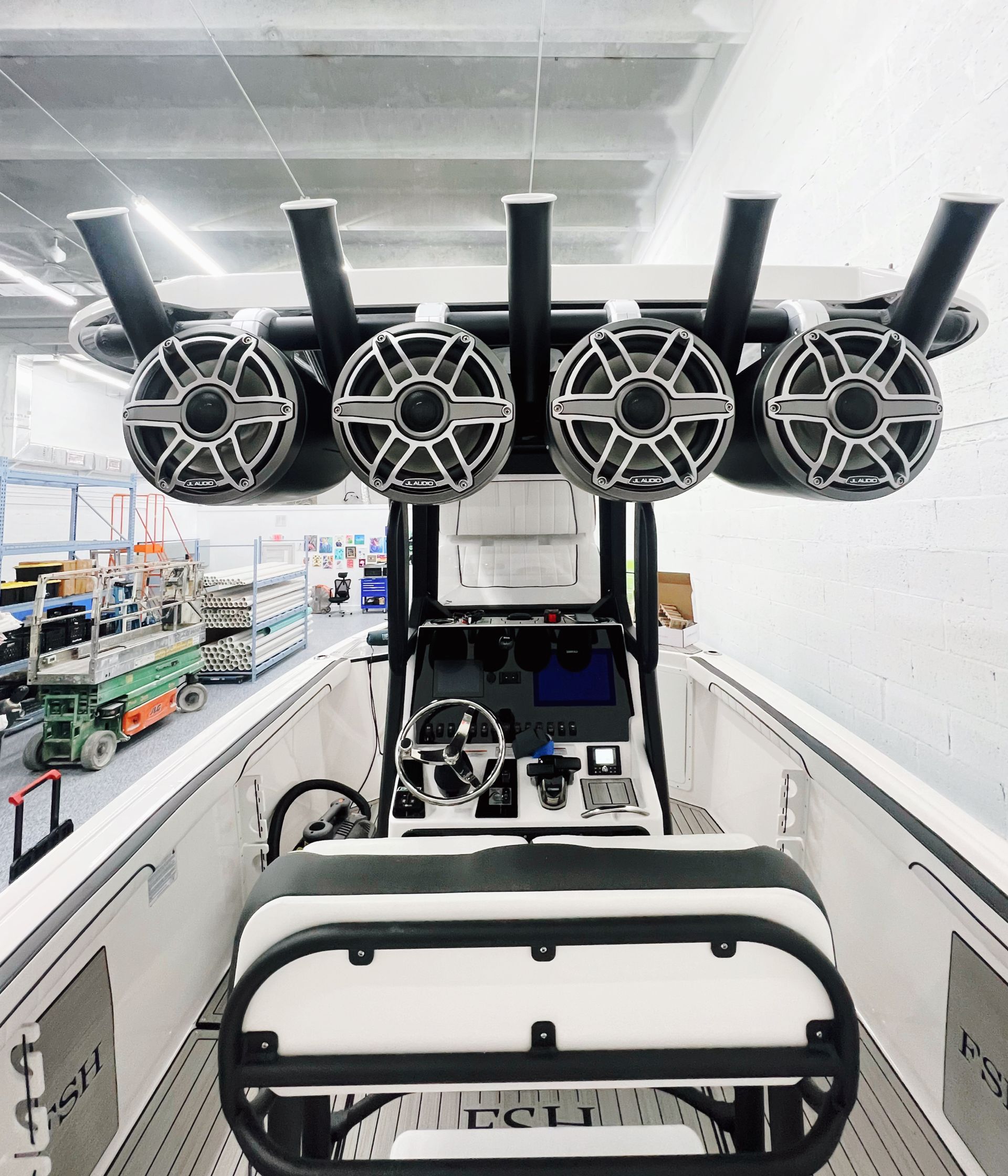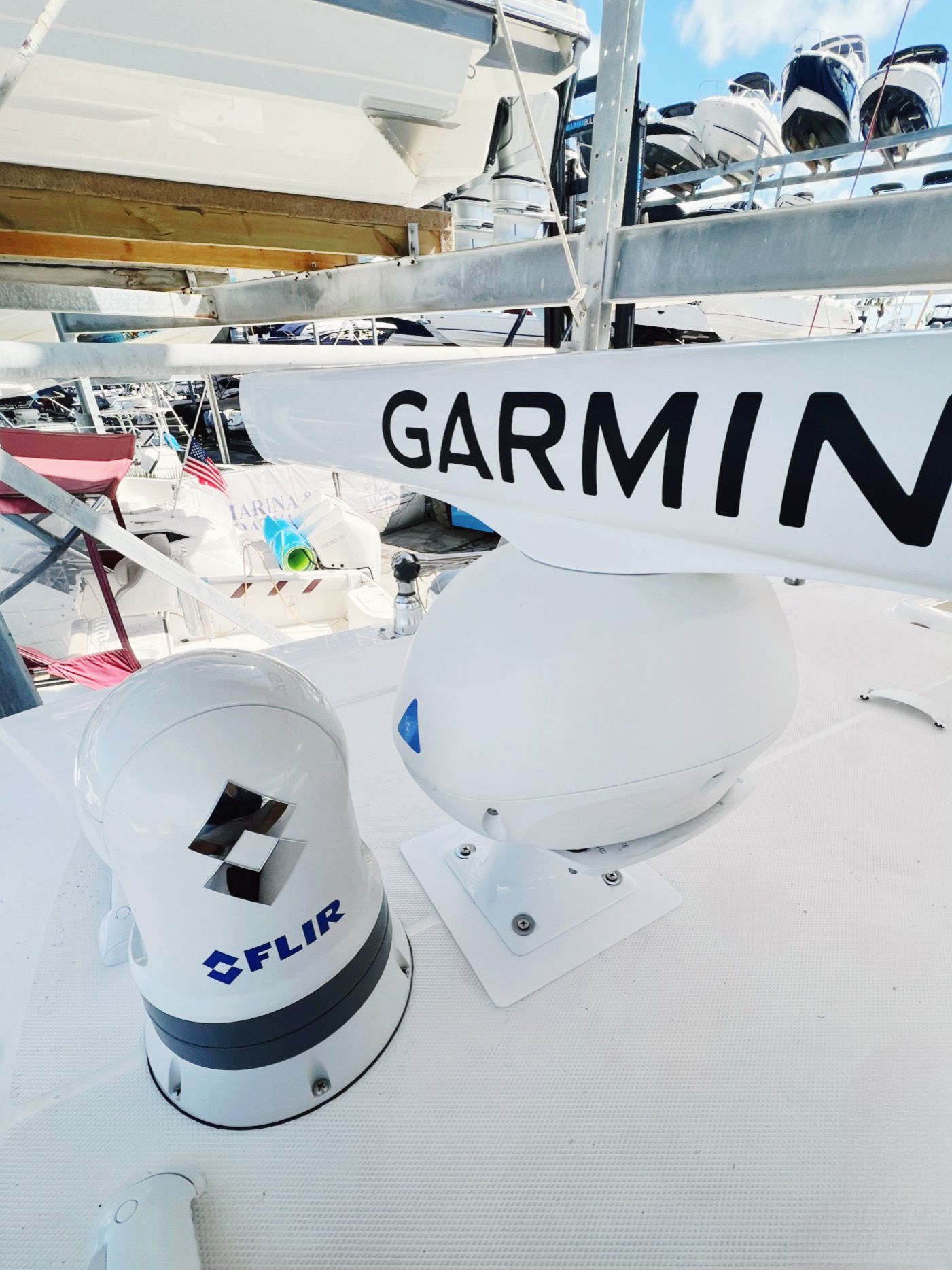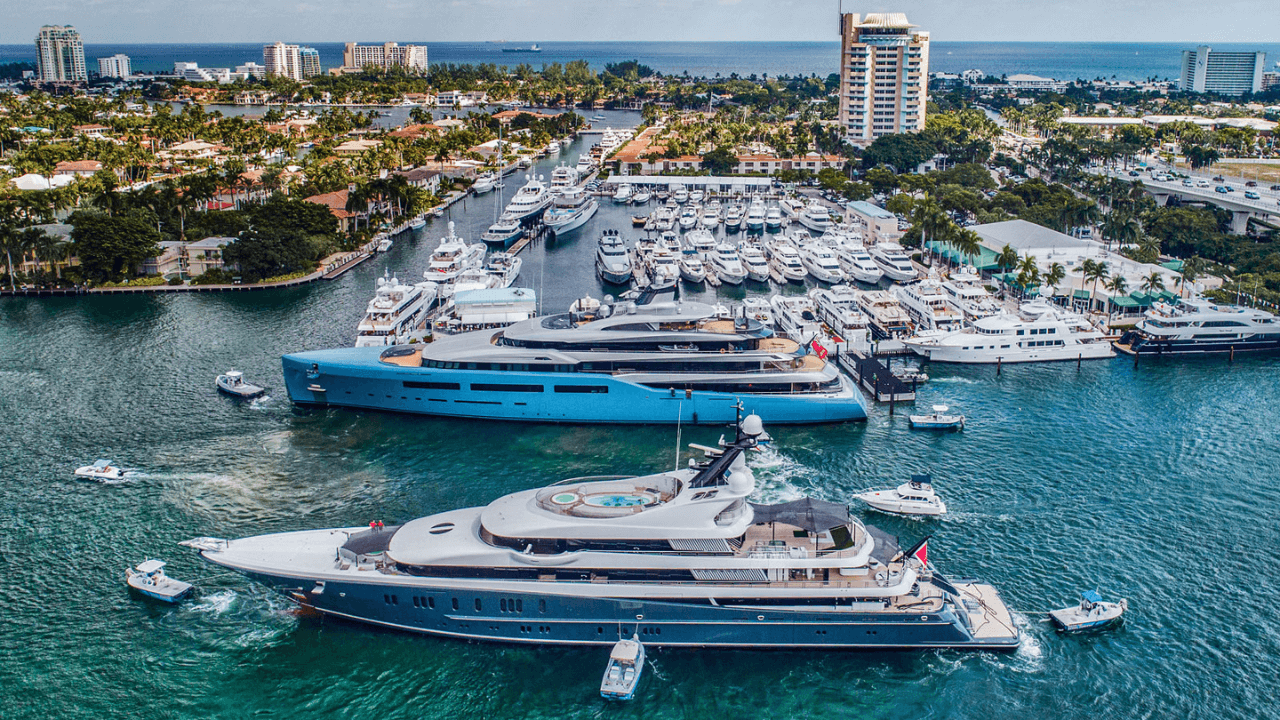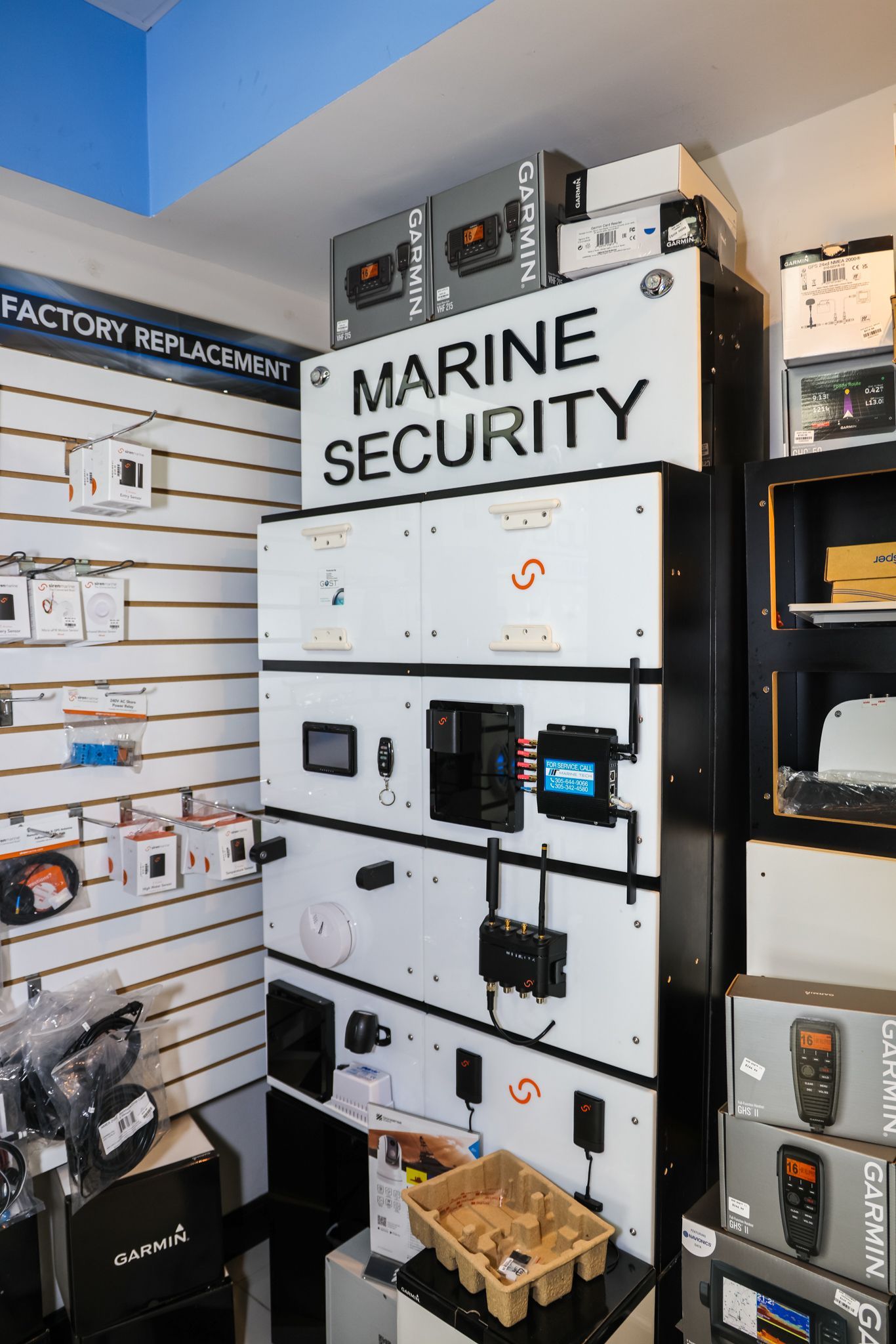7 Steps to Set Up & Calibrate Marine Electronics (2023)
Navigating the waters requires precise, reliable, and correctly calibrated marine electronics.
Regardless of whether one is seeking direction out at sea, tracking fish, or merely targeting unruffled waters for a peaceful sail, marine electronics are pivotal.
Even advanced devices, however, may not perform optimally if not set up and calibrated correctly.
This blog post, tailored to both the casual boater and the professional mariner, delves into the various stages of setting up and calibrating your marine electronics.
Special attention will be given to common mistakes to avoid, expert tips, and industry insights.
Get ready to amplify your nautical knowledge and enhance your aquatic expeditions.
Steps To Set Up & Calibrate Marine Electronics
1. Purchase Suitable Marine Electronics for Boat Type
Choosing the right marine electronics for your boat is paramount. Be it for recreational fishing or professional purposes, the choice of your equipment will directly impact your experience on the water.
A variety of marine electronics are available in the market, that cater to different needs and boat types.
Depending on your intended use, you might need to look into fish finders, radar systems, VHF radios or marine GPS systems.
Fish finders , for instance, are essential for fishermen as they work by sending out sound waves and interpreting the data to give a graphical representation of where fish are located.
Not all fish finders are created equal; each model offers a certain range of features that cater to specific fishing or boating needs.
The above highlights the fact that while two fish finders might look the same, they might offer completely different functionalities.
Hence, it is critical to
research and compare different models before purchasing one.
It’s also important to understand your specific needs and preferences before making a choice.
Additionally, other important marine electronics include radar systems and VHF radios.
While radar systems are invaluable in navigating through fog or at night, VHF radios are useful communication tools that can send distress signals in emergencies.
If you’re an avid boater, a marine GPS system is another indispensable tool that you need to consider. This device helps you navigate the waters effortlessly, providing accurate and reliable location data.
Before settling on a marine electronic embedded device, it is advisable to ascertain its ease of installation and compatibility with your boat type.
Cheap or lesser-known brands might seem attractive in terms of cost, but could pose difficulties during installation.
Serious thought should also be given to consider whether the device would work seamlessly with your boat’s system.
Viewing the embedded video can provide useful insights into buying a suitable fish finder.
You will learn how to get the best value for your money while ensuring the device adequately matches your fishing needs.
Moreover, other essential considerations while purchasing marine electronics include the warranty and after-sales service . Equipment from established brands usually comes with guarantees of good customer service and easily accessible spare parts, thus ensuring the durability and long service life of the devices.
Lastly, keep in mind that technology progresses at a rapid pace.
Therefore, consider if features of the device you are interested in might soon become outdated.
It might be worth investing in the more advanced, latest models that guarantee a longer life and better service.
All in all, ensure that you take the time to research extensively before choosing the perfect marine electronics that will greatly enhance your boating experience.
2. Install electronic equipment following manufacturer guidelines.
After the successful acquisition of marine electronics that fit the specifications and requirements of your boat, the next crucial step is to install the equipment.
The best way to ensure proper installation of your marine equipment is to follow the manufacturer’s guidelines.
These instructions typically come in a manual or guide that is provided when you purchase the equipment.
One common mistake made by many boat owners is dismissing the instruction manual and opting to rely on their knowledge or intuition for the installation of the equipment.
It is highly recommended that you follow the provided guidelines as they can help you prevent installation errors thereby guaranteeing optimal performance of the device.
Quite often, the manufacturer’s guidelines take into account the specialized characteristics and intricacies of the equipment, something that common generic practices might overlook.
Indeed, the manual should be seen as an essential guide.
Not only does it provide step by step instructions on how to install your equipment, it also details the tools needed, possible problems, and their solutions.
The manufacturer’s instructions are meant to ensure the longevity and effectiveness of your device.
Ignoring these could compromise the quality and durability of your devices.
Most marine electronics are designed to withstand the marine environment.
However, incorrect installation can forfeit their resilience and potentially result in corrosion, loose wiring, or water intrusion.
Correct installation following the manufacturer’s guidelines ensures that the devices are fastened securely, and the wiring and connections are done properly.
It’s also worth noting that incorrect installation could void the warranty of some devices.
Manufacturers usually include a clause in their warranty policy stating that the warranty does not cover damages or issues caused by improper installation.
If you come across any confusion or difficulties during the installation process, be sure to reach out to the manufacturer’s customer service.
They will gladly assist with any issues and guide you towards successful installation. Remember, the goal is to get the best performance and longest life out of your marine electronics.
Always use the correct tools for the installation process. Using inappropriate tools can damage the equipment and again, could void the warranty.
Also, avoid any modifications unless these are clearly allowed and guided by the instruction manual.
Manufacturers design their products to perform at their best without modification.
In a nutshell, the importance of following the manufacturer’s installation guidelines cannot be overstated.
With proper installation , you’ll maximize the device’s functionality, protect your warranty, and make the best use of your marine electronics.
By following the manufacturer’s guidelines, durably fastening devices, correctly installing wiring and connections, and using the right tools, you can ensure that your marine electronic devices function optimally for as long as possible.
The next step after installation is to power up your systems and check for functionality . Any sign of dysfunction might be an indicator of wrong setup, requiring immediate attention before proceeding further.
3. Power Up Systems to Check Functionality
The important third step in setting up and calibrating your marine electronics is to power up your systems to check for functionality .
It is essential to confirm that all the electronics have been properly installed and are working as they should be.
This is also the point where you’ll start to see whether the manufacturer’s wiring and installation instructions were clear and effective.
Should you find any issues during this phase, you’d need to troubleshoot them promptly.
The video included above provides some in-depth tips and techniques for doing so.
Remember, every piece of equipment must be functional for the system to work correctly.
All components should work independently and in harmony with one another to deliver peak performance.
This holds especially true for marine electronics setups that can be quite complex.
Seamless equipment functionality can be the key to smooth boating operations, making the power-up process even more pivotal.
It’s crucial to check not only for immediate functionality but also for potential issues that could occur down the line.
Inconsistent power readings or odd noises can be indicative of problems not immediately apparent.
Always remember to address these early warning signs to avoid bigger issues later on.
To add, ensuring that your setup is powered correctly can also affect your equipment’s lifespan substantially.
In the long run, careful and thorough system checks at the setup stage can save time, effort, and costly repairs.
Lastly, keep in mind that your marine electronics system may require you to run some initial tests or setup programs on power-up, follow the prompts and do not rush through this process.
4. Set Initial System Preferences and Options
During the initial setup of your marine electronic units, configuring and customizing your system preferences and options is a critical step.
This procedure will optimize the usefulness and effectiveness of your device, making it easier and more intuitive to use.
In most instances, you’ll be setting preferences such as date, time, units of measure, and language, among other things.
Ensure that you’re setting the correct units of measure . Whether you prefer nautical miles or kilometers for distance, degrees Celsius or Fahrenheit for temperature, the choice is yours.
Remember, these settings align with your comfort zone and are crucial in providing data in a format you understand and are comfortable with.
Being familiar with and comfortable with your units of measure can make navigation much smoother and less prone to errors. So choose something you’re comfortable with.
Another primary preference that must be taken into account is the date and time setting .
Given that the performance of some marine electronics may be highly dependent on time settings, ensuring the accuracy of your device’s time is crucial.
Additionally, the date and time settings will help in tracking, for example, tides and in creating accurate records of your marine activities.
The language setting is also important. Make sure to set this to a language you’re completely fluent in.
It’s worth noting that even if your English is fluent, if it’s not your primary language, subtleties or nuances can lead to confusion, especially in critical situations.
Not only can language settings affect the interface of your device, but it might also affect the readability of manuals and navigational charts.
Keep in mind that navigational safety should be your top priority while on the water. Therefore, it’s essential to set all these preferences correctly.
Finally, take note that some marine electronics may have additional settings such as adjusting the contrast and brightness for better visibility, or even the color of the interface, adjust these as you see fit.
While setting up your marine electronics may seem complicated, a well-set system can greatly enhance your overall experience and safety on the water.
Remember to refer to your manufacturer’s guidelines and manuals for any specific settings or options that need to be activated for your specific model.
5. Input Local Coordinates and Time Zone
When setting up your marine electronics, the input of local coordinates and time zone is an important part of the process.
This step ensures accurate data for navigation and timing purposes, establishing the boat’s current position and the correct time for that location.
The user manual of your particular marine electronics should provide a comprehensive guide on how to input this data.
Global Positioning System (GPS) technology is generally used to enter these coordinates, giving precise, real-time location information.
Wishing to understand more about how the GPS works? Consider watching this informative video.
The video elaborates on GPS coordinate system and how we utilize it for navigational purposes.
The correlation between latitude and longitude coordinates and the boat’s physical location in the world is key to marine navigation.
Inputting the correct local coordinates and time zone can greatly enhance your journey’s safety and efficiency.
As emphasized in the video, the right input of local coordinates can make a big difference in calculating your course correctly and leveraging GPS technology to its fullest.
Additionally, having the correct time zone set can prevent discrepancies in timing for things like arrival times, tide data, and sunset/sunrise times.
It’s worth mentioning though that longitude and latitude are just two aspects of positional information, with altitude being a third component used in GPS systems – although this is less relevant in marine applications.
Both the coordinates and time zone can usually be adjusted in the settings menu of your marine electronics interface, but consult your user guide to be sure.
If manually inputting the coordinates proves challenging, some devices offer auto-detection via the GPS system, however manual verification is always a good idea to ensure accuracy .
In summary, while this step might seem complex due to the technical terminology, it’s actually quite straightforward with the right instructions and understanding of how coordinate systems work.
Just remember – latitude is flat (horizontal) and relates to north/south positioning, whereas longitude is long (vertical) and related to east/west positioning.
All of these precautions in the setup of your marine electronics will ultimately contribute to a safer and more accurate navigation on the water.
6. Perform Auto-Calibration Procedures if Available
Setting up and calibrating marine electronics properly gives mariners more precise readings , increasing both effectiveness and safety.
Most modern marine electronics come with an auto-calibration feature .
This feature offers a convenient way to properly configure your device with minimal input.
Once activated, the auto-calibration process automatically optimizes system settings based on its built-in algorithms.
The step to the start the procedure va ries depending on the device .
In most instances, the Auto-Calculate or Auto-Tune option is found in the system settings or calibration menu.
When you start the auto-calibration process, it’s important to make sure your boat isn’t in motion and that you’re on a course that is legal and safe for navigation .
Auto-calibration sets optimal values for various parameters such as heading, pitch, roll, and yaw, reflecting the individual boat characteristics and the operating environment.
Following this, your marine electronics then utilize these parameters to provide more accurate tracking, mapping, and navigation.
The effectiveness of the auto-calibration largely depends on the specifics of your boat and operating conditions .
Auto-calibration is especially beneficial for instruments like auto-pilots, RADARs, fish finders, and multi-function displays.
Bear in mind , manufacturers often provide detailed instructions in the manual for their auto-calibration features.
If auto-calibration doesn’t yield satisfactory results, manual calibration might be needed, which, though more time-consuming, can provide more tailored results. >
Regardless, the ease and functionality of auto-calibration make it a feature well worth considering in your marine electronics setup procedure.
Ultimately , successful calibration, be it automatic or manual, will help in the accurate and efficient operation of your marine electronics.
7. Manually Fine-Tune Settings as Needed
Once the basic set up and auto-calibration of your marine electronics is complete, the next essential step involves manually fine-tuning the settings.
The reason for this is that there are always specific nuances or unique environmental factors that aren’t considered during auto-calibration, so personal adjustment becomes indispensable.
For example, understanding and plugging in the electrical interference caused by other equipment on your boat is crucial.
This interference can affect the performance of your marine electronics, specifically the accuracy of readings.
Another important aspect to manually fine-tune is the brightness settings of your electronic screens .
Depending on the time of day, amount of sunlight and your personal preference, you might want to tweak the brightness to ensure you can clearly see all the information.
Though auto-calibration procedures are undoubtedly helpful, they often cannot account for all the specificities relating to your marine vessel or surrounding environment. Manual fine-tuning is required to truly optimize the performance of marine electronics.
To further substantiate this, consider the example of a fish finder.
Auto-calibration might set the device at an average depth, but if you’re fishing in waters known for their depth variations, you’d need to adjust the settings accordingly.
Also, calibrating marine devices manually enables you to set alarms on your devices.
You can set alarms for optimal fishing conditions, departure times, or even for when your vessel strays out of a predefined area.
The customization choices are truly endless when you take the time to manually fine-tune your marine electronics.
Watching the video embedded above will provide you with valuable visual guidance for optimizing marine electronics.
It provides a step-by-step guide on how to adjust various settings and maximize the efficiency of marine electronics. So, it’s highly recommended to watch the video if you want an in-depth understanding of the adjustment process.
Remember that each vessel and surrounding environment is unique, so manual fine-tuning should be done each time the boat is used in a different setting, making this step an ongoing one in the longer term.
In this way, the performance of your marine electronics can always be optimized for your specific needs.
The Bottom Line
Ultimately, investing time and energy into purchasing, installing, and configuring your marine electronics correctly for your specific boat type lends itself to a smoother, safer time out on the water.
Ensuring proper functionality and individualized settings, such as local coordinates and correct time zones, increases navigational accuracy and output.
Additionally, employing auto-calibration processes and manual fine-tuning further enhances performance and reliability.
Therefore, it is crucial to not overlook these essential steps when implementing marine electronics to fully maximize their intended features and benefits.
Contact Us
Contact Us
Recent Posts
CONTACT US
Looking to upgrade your marine electronics?
With more than 25 years of experience, we can help you get started today!




